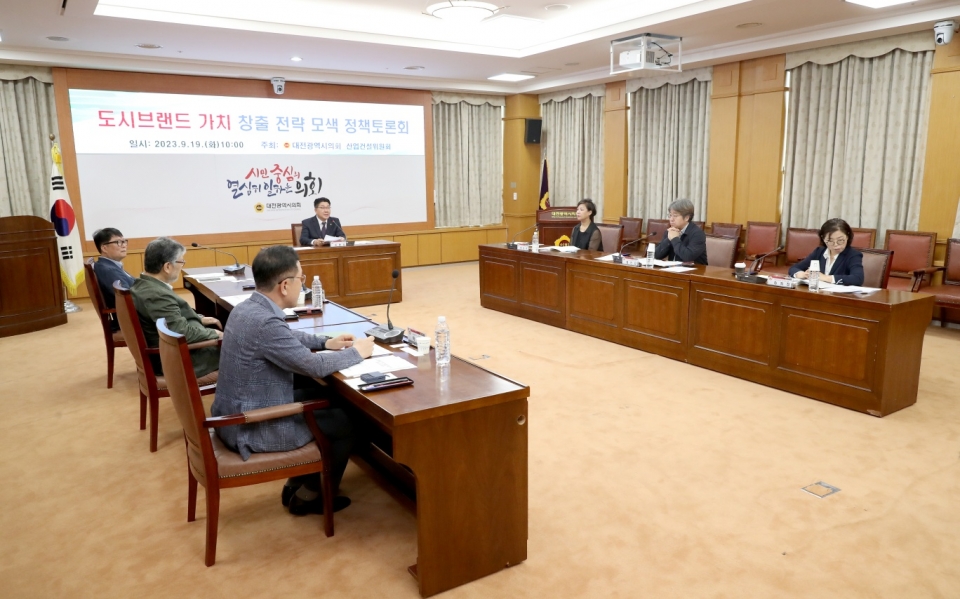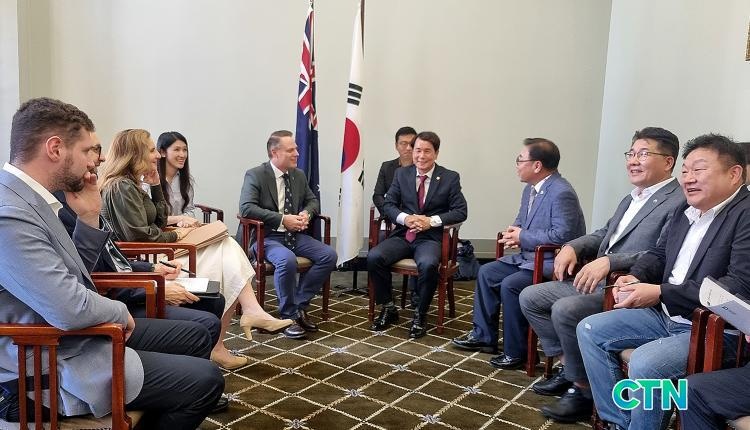
1. Congratulations on the 1st anniversary of your election! Could you tell us about one thing you enjoyed most and one thing you regret? As you have been busy working for the National Assembly for this year.
The most rewarding work is the enactment of the ‘Daejeon Metropolitan City Early Childhood Education Expense Support Ordinance’. The Daejeon Metropolitan City Early Childhood Education Expense Support Ordinance was enacted to address the burden of raising children in private kindergartens due to policy differences. The ordinance is a significant step towards redefining Daejeon as a "good city to raise children" and an investment in the future of the city, as it serves as a policy background for the city's childcare and education policies.
2. Your constituency is centered around Sintanjin, which is the original downtown area in Daedeok-gu. Could you briefly introduce the key projects being promoted for the development of Daedeok-gu’s original downtown?
Sintanjin is a public housing project in Daejeon City, that aims to provide customized rental housing for young people. The project consists of 237 rental houses and urban regeneration facilities, set to start occupancy in March 2024. The Ministry of Land, Infrastructure, and Transport is promoting the Urban Regeneration New Deal Project, which aims to revitalize urban functions and the economy in declining cities. The project, which invested 30 billion won in 2017, focuses on creating a commercial district, nurturing human resources, and supporting leisure culture. A 12,600-complex community center in Sintanjin, completed in December 2021, is set to improve residents' lives through cultural enjoyment and leisure use.

3. Although Sintanjin is a transportation hub with a railway station, it is relatively neglected from development, so the development of the area near Sintanjin Station is the most urgent. Can you explain some details and the status of projects being promoted for the development of the Sintanjin Station area?
The Sintanjin subway area's development should start with the revitalization of the Sintanjin Market, the second largest market in Daejeon. The city is currently reviewing the idea of making the oil market permanent and co-existing with local merchants. Accessibility is crucial for revitalizing the Shintanjin Station area, with citizens demanding a pedestrian path directly connected to the station. A feasibility study was conducted in 2022 to build a new West Plaza connection road, but it is currently at a standstill due to unsecured economic feasibility. A new revitalization strategy, such as improving railway and transportation functions, is needed to address the non-stop KTX problem and ensure the station's role as a transportation hub. Close cooperation with the Korea Railroad Corporation and securing national funds are also important to this.
4. Daedeok-gu seems to be relatively lacking in culture and arts compared to other autonomous districts in Daejeon. To improve this, the assemblyman is advocating the construction of a Daejeon representative library in Daejeon and the maintenance of a long-term unimplemented city park. What is the business plan for this and what is the current progress?
The construction of a representative library in Daejeon is being considered due to the increasing demand for complex cultural spaces. Despite the presence of 590 large and small libraries in the city, only 25 are public, and Daejeon has the 4th smallest number of public libraries nationwide. The representative library serves as a control tower for community library policies, including development, service, and material collection. The Hanbat Library, which opened in 1989, is being considered for replacement, with a projected cost of 90 billion KRW and expected to be completed around 2030. To revitalize the city, cultural influence and bridging cultural gaps are essential. Daegu has built a representative library and one on neglected sites, preventing population outflow and establishing local self-reliance. A comprehensive review is underway for the library designation. Daejeon needs more attention and effort to create parks and urban planning facilities, making them three-dimensional and complex. That being said, proactive efforts can increase land resource use and enhance citizens' lives. The assembly member proposed this proposal to the mayor through a city administration question and requested an administrative review.

5. For regional development, young people are second only to companies. Next year in March, Shintanjin will open Dagaon (다가온) which is a public rental house where young people and newlyweds live. In addition to residence, are there any projects being promoted to create a new Sintanjin where young people can settle down and work?
Daejeon faces a local extinction problem, a social factor causing population outflow to metropolitan areas and large cities. Despite a decrease of 49,000 people over the past five years, natural factors increased by 11,000 people, leading to a total outflow of 60,000 people, including the young population. To maintain regional sustainability and improve quality of life, increasing the youth population needs to be focused. In order to foresee and avoid this, public rental housing in Sintanjin, Dagaon, and housing rental deposit interest support projects are being gradually implemented. Projects also support start-ups, education, and interview fees. Youth support programs like Emotional Youth Café and many more are being created. The Daejeon Youth Portal and Daecheong Net are also being established to increase information accessibility and participation in municipal administration.
6. Daedeok-gu is the northernmost part of Daejeon, along the Geumgang River and bordering Cheongju. Are there any new projects being promoted or planned in connection with the Geumgang water area or the Cheongju region?
Daecheong Dam, which is located in North Chungcheong Province, provides drinking water and water sources for domestic and industrial use. It was completed in the 1980s and has been subject to strong regulations for 43 years. Daecheong Lake, a natural tourist resource, is considered a new food source in Daejeon. In the 8th term of the popular election, Daejeon City and Dong-gu pledged to revitalize Daecheong. Lake eco-tourism and formed a Regional Economy Revitalization TF Team Using Daecheong Lake" to promote the general restaurant and bed and breakfast industry. Efforts to unravel the tangled threads are continuing, starting with deregulation. The four cities and provinces in the Chungcheong region must jointly respond to improve the sustainable development of Daecheong Lake, address the suffering and damage suffered by residents, and address the irrationality of old regulations.


